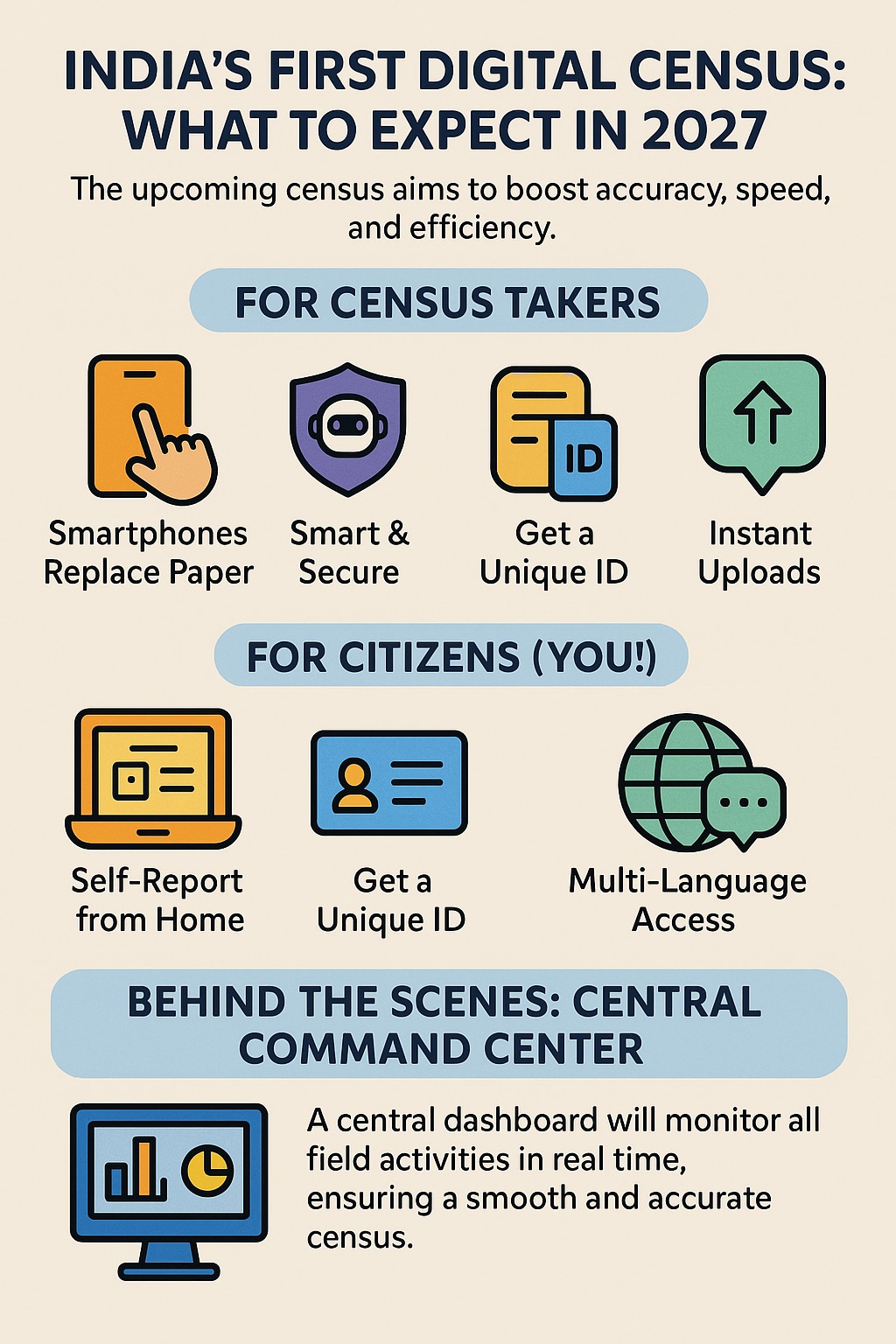India Population Census 2027 explained: Timeline, method, and key insights
The 2027 population census in India is happening with major digital changes. Here's everything you need to know about the upcoming survey


Every few years, the world looks at numbers, not just economic forecasts or election results, but at people. The number of people living in a city, state, or country shapes policies, budgets, infrastructure, and everyday life. Among all nations, India stands out for its rich culture, diverse traditions, unique geography, and large population. The current population of India has surpassed that of China to become the world"s most populous country.
In such a densely populated nation, understanding who lives where, how families are growing, and what people need is necessary. That’s where the population census comes in. India’s next census is in 2027, after a long delay due to the COVID-19 pandemic.
In this article, we’ll discuss why the census matters, what the last reports showed, what we can expect in the next one, its timeline and methodology, and how the phases of the population census could shape everything from policies to planning.
In just a decade, India"s population has grown by over 135 million. In 2015, the population was approximately 1.32 billion, with a fertility rate of 2.29, and just over 32 percent of the population living in urban areas.
Fast forward to 2025, and the current population of India is estimated to be around 1.46 billion, accounting for over 17 percent of the global population. With a median age of almost 29 years, the country remains one of the youngest nations demographically. Around 37 percent of its population now lives in urban areas, indicating a steady shift from rural to city life.
As the 2027 population census nears, various factors will shape the census report, offering deeper insights into how India’s population is growing, where it’s heading, and how it impacts various sectors.
The population census is more than just a headcount. It acts as a national mirror, reflecting who lives in India, where they live, how they live, and what they need. With the current population of India exceeding 1.4 billion, it has a significant impact on everything from welfare distribution to urban development. Public policies, development schemes, and financial decisions all lean heavily on the accuracy of the census report.
Here’s why it matters:
The Ministry of Home Affairs stated that India’s next population census—the 16th since independence—will be conducted in two distinct phases. After a long gap since the last census report (in 2011), the upcoming survey will include caste enumeration and updated household data, making it one of the most comprehensive counts so far.
The entire process will be governed by the Census Act of 1948 and the Census Rules, 1990.
To carry out this vast survey, over 30 lakh enumerators and supervisors will be deployed. This extensive census report will provide vital insights into India"s current population and its socio-economic profile.
 Technology is shaping nearly every part of public service, and the upcoming population census is expected to reflect that shift. If all goes as planned, Census 2027 will be India’s first digital census, combining traditional enumeration with mobile apps, real-time tracking, and self-reporting features. The goal is to minimise errors, enhance accuracy, and expedite the overall process.
Technology is shaping nearly every part of public service, and the upcoming population census is expected to reflect that shift. If all goes as planned, Census 2027 will be India’s first digital census, combining traditional enumeration with mobile apps, real-time tracking, and self-reporting features. The goal is to minimise errors, enhance accuracy, and expedite the overall process.
Enumerators may be given smartphones preloaded with census software to ease the survey process. Instead of paper forms, responses will be entered directly into a digital system, featuring GPS integration, geofencing, and in-built alerts to flag unusual entries, such as incorrect ages or unlikely household sizes.
You may also be given the option to self-enumerate through a dedicated portal. Once completed, you’ll receive a unique ID to verify the details during field visits.
Login methods for self-enumeration may also be rolled out in 16 different languages, which may include:
A central monitoring system is reportedly being set up to supervise field activities, track uploads, and validate data in real-time. If implemented smoothly, this digitisation could add a new dimension to how India captures the current population and demographic trends for its next census report.
First Published: Jul 08, 2025, 12:57
Subscribe Now